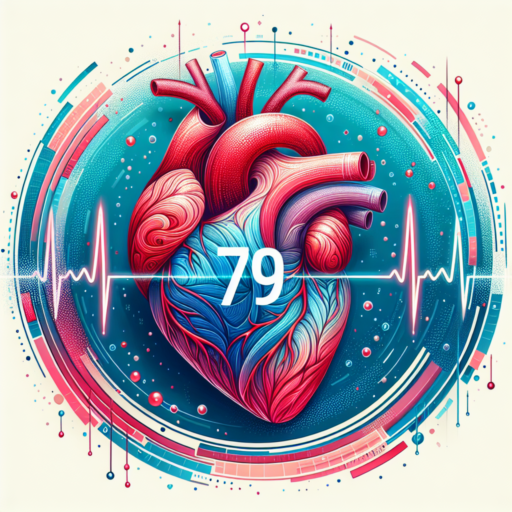Understanding Your Heart: What Determines Your Highest Ever Heart Rate?
Your heart rate is a critical indicator of your cardiovascular health and overall well-being. The highest ever heart rate a person can achieve, often referred to as the maximum heart rate (MHR), varies from individual to individual. This variation is influenced by several factors that can impact how fast your heart can beat during intense physical exercise or high levels of stress.
Age: The Primary Factor
The most significant determinant of your MHR is your age. As a general rule, your maximum heart rate decreases as you grow older. This is often calculated using the formula: 220 minus your age. However, this is a generic estimation and the actual number can vary based on physical fitness, genetics, and health conditions.
Genetics and Physical Fitness
- Genetics: Your genetic makeup plays a crucial role in determining the maximum capacity of your heart rate. Some individuals are naturally predisposed to have a higher MHR, providing them an edge in endurance-based activities.
- Physical Fitness: Regular exercise and maintaining a healthy lifestyle can significantly impact your MHR. Athletes, for example, often have a lower resting heart rate but can achieve higher maximum heart rates due to better cardiovascular fitness.
Understanding these factors can help you gauge the potential of your heart’s performance during physical exertion. Remember, while reaching your highest ever heart and rate can be a benchmark for physical endurance, it’s crucial to approach any exercise regimen with caution and respect for your body’s limits.
The Science Behind Peak Cardiac Performance: How High Can Heart Rates Go?
Exploring the science behind peak cardiac performance sheds light on the incredible capacity of the human heart and how it adapts during periods of intense physical demand. The question of «How high can heart rates go?» is not just of interest to athletes but also provides valuable insights into cardiac health and potential.
At the core of understanding peak cardiac performance is the concept of the maximum heart rate (MHR), a crucial figure that represents the highest number of beats per minute (BPM) a heart can achieve without overexertion. The commonly accepted formula for estimating one’s MHR is 220 minus your age. However, this formula is a generalization and individual maximum heart rates can vary significantly based on factors such as fitness level, genetics, and the presence of cardiovascular diseases.
Intensity levels and their impact on heart rate further elucidate how the heart responds under varying degrees of exercise. During light to moderate exercise, heart rates increase in a linear fashion in response to the intensity of the workout. Yet, as exercise intensity approaches maximal levels, the heart rate response can illustrate an individual’s cardiac efficiency and potential. Athletes and individuals with higher fitness levels tend to have a more efficient heart, capable of pumping a larger volume of blood per beat, thereby possibly reaching a higher peak heart rate.
Famous Records: Athletes and Their Jaw-Dropping Highest Ever Heart Rates
The realm of sports is not just about speed, power, and skill; it’s also about the incredible physical limits that athletes push through. Among these fascinating aspects is the observation of athletes’ heart rates during peak performance. Understanding the highest ever heart rates recorded by famous athletes offers a window into the sheer physical demands of top-level sports. These heart rates, often reaching levels that seem almost inconceivable, highlight not just physical endurance but also the psychological resilience required to compete at the highest levels.
Exploring the heart rates of athletes across different sports reveals a varied landscape of physiological extremes. For example, cyclists in the Tour de France can experience heart rates that surge beyond 200 beats per minute (bpm) during intense climbs. Meanwhile, marathon runners, during the climax of their race, can display heart rates that mirror these extraordinary levels. These figures are not just numbers; they are indicative of the tremendous effort and stamina that elite competition demands. It’s a testament to the athlete’s dedication, training, and the incredible capacity of the human body to adapt and perform under stress.
When discussing the highest ever heart rates recorded, it becomes clear that these are not mere outliers. They are the result of years of conditioning, pushing the body’s limits, and adapting to the demands of their sport. The data gathered from such recordings also serve a practical purpose, providing valuable insights into performance optimization and health monitoring. By studying these peaks in heart rate, trainers and medical professionals can better understand how to prepare athletes for the rigors of competition, ensuring not just success, but also their well-being.
Measuring Your Max: Techniques to Safely Determine Your Highest Heart Rate
Understanding your maximum heart rate is crucial for tailoring your workouts to achieve optimal performance and safety. It acts as a guide to effectively manage the intensity of your exercises. However, determining your highest heart rate should be approached with caution and proper techniques to ensure accuracy without compromising your health.
Begin with the Standard Formula: A preliminary step for estimating your max heart rate is using the well-acknowledged formula: 220 minus your age. Though this method offers a quick estimation, it’s essential to remember that individual variances can make a significant difference. Therefore, this should only be the starting point for a more in-depth analysis.
Employing a Heart Rate Monitor
The use of a heart rate monitor during a gradual increase in exercise intensity provides a more precise measure of your highest heart rate. Begin with a warm-up and gradually increase your intensity until you reach a level that is hard to sustain for long periods. Observing the highest number on the heart rate monitor during this peak effort gives a close approximation of your maximum heart rate. It’s crucial to conduct this under safe conditions, preferably with professional supervision if you’re new to high-intensity exercise.
Consultation with Health Professionals: To ensure safety and accuracy, consulting a health professional or a certified trainer, especially if you have existing health concerns, is advisable. They can recommend tailored methods or supervise a controlled test to obtain your precise max heart rate. This personalized approach not only ensures your safety but also guarantees that the results are as accurate and beneficial as possible for your fitness journey.
From Resting to Racing: What Your Heart Rate Tells You About Your Health
Your heart rate is a critical indicator of your overall health and fitness level. Often overlooked, this metric, ranging from your resting heart rate to the peaks experienced during intense activities, offers profound insights into the well-being of your cardiovascular system. Understanding the nuances of what your heart rate can reveal about your health is the first step towards maintaining or improving your physical condition.
At rest, a typical adult’s heart rate should sit between 60 and 100 beats per minute (bpm). A lower resting heart rate can indicate a higher level of cardiovascular fitness. Athletes, for example, often showcase resting heart rates well below the average, signifying their hearts’ efficiency at pumping blood throughout the body. Conversely, a resting heart rate consistently above 100 bpm—a condition known as tachycardia—might signal underlying health issues that require medical attention. Monitoring these shifts in your resting heart rate can offer crucial cues for potential health concerns or advancements in your fitness regimen.
When transitioned from resting to racing, or during exercise, your heart rate increases to supply the muscles with adequate oxygen. This escalation is perfectly normal and expected. However, understanding your «target heart rate zone» for exercise can vastly improve the efficiency of your workouts. Typically, this zone is achieved at 50% to 85% of your maximum heart rate, a threshold determined by subtracting your age from 220. Exercising within this zone not only ensures optimal cardiovascular benefits but also minimizes the risk of overexertion.
The Role of Stress and Adrenaline in Achieving Your Highest Possible Heart Rate
Understanding the impact of stress and adrenaline on the heart is crucial in comprehending how one can reach their highest possible heart rate. Stress, a common experience in everyday life, triggers the ‘fight or flight’ response, leading to the release of adrenaline. This powerful hormone, produced by the adrenal glands, significantly affects the heart rate, preparing the body to face perceived threats or challenges.
When the body perceives stress, adrenaline floods the bloodstream, resulting in increased heart rate, elevated blood pressure, and enhanced energy supplies. This natural mechanism is designed to enable rapid responses in crucial situations. It’s important to recognize that achieving the highest possible heart rate through stress and adrenaline can have both short-term benefits and long-term health implications. In emergency scenarios, this heightened state can enhance focus and physical ability, potentially contributing to survival and success.
However, it’s crucial to understand that the body’s response to stress and the subsequent release of adrenaline is not the only factor influencing heart rate. Physical fitness, mental health, and existing heart conditions also play significant roles. The interplay between these factors and the body’s stress response can greatly affect an individual’s ability to reach their peak heart rate, emphasizing the complexity of the body’s cardiovascular and nervous systems.
Training Tips: How to Safely Increase Your Maximum Heart Rate
Absolutely, here are some content ideas focusing solely on the H2 topic, incorporating HTML elements where necessary:
Increasing your maximum heart rate (MHR) safely is crucial for enhancing cardiovascular fitness and overall endurance. While your MHR is largely determined by genetics, certain training techniques can help you reach and slightly push this limit without compromising your health. It’s important to approach this goal with caution and the right strategy to avoid any potential risks.
Understand Your Current Fitness Level
Before attempting to increase your maximum heart rate, it’s critical to have a clear understanding of your current fitness level. Begin by calculating your current MHR using the formula 220 minus your age. This will provide you with a rough estimate to start. From there, observe how your heart responds to different types of exercises and intensities to get a clearer picture of your cardiovascular health and capacity.
Incorporate Interval Training
One effective method for safely increasing your MHR is through interval training. This involves alternating between periods of high-intensity exercise and rest or lower-intensity exercise, which can help push your heart rate up safely over time. Start with shorter intervals of high intensity and gradually increase the duration as your endurance improves. It’s essential to listen to your body and avoid pushing too hard, too fast.
Mix Up Your Workouts
Variety in your workouts is not just the spice of life but can also be a key to safely boosting your MHR. Incorporating a mix of cardiovascular exercises, such as running, cycling, and swimming, can help challenge your heart in different ways. This diversity ensures that your heart becomes more adaptable and can handle higher rates more efficiently. Remember, consistency and patience are vital as your body adjusts to these new demands.
No se han encontrado productos.
Breaking Down Myths: Understanding What a High Heart Rate Means for You
When it comes to heart health, there are numerous misconceptions that can lead individuals to misinterpret the significance of a high heart rate. It’s crucial to understand the distinction between myths and medical advice, ensuring your assessment of heart rate is accurate and informed. Delving into the facts can help you comprehend what a high heart rate indicates about your physical condition and when it might be a reason for concern.
Common Misconceptions About High Heart Rate
One prevalent myth is that a high heart rate is always indicative of cardiovascular problems. While it’s true that excessive heart rates can signal underlying issues, factors such as stress, dehydration, and lack of sleep can also elevate your heart rate temporarily without implying chronic conditions. It’s essential to consider the context of your lifestyle and physical state before jumping to conclusions.
When to Consult a Healthcare Professional
Understanding when to seek medical advice is vital in managing your heart health properly. If you notice that your heart rate is consistently high without a clear cause, such as physical activity, it may be time to consult with a healthcare professional. Persistent high heart rates, especially if accompanied by symptoms like shortness of breath, dizziness, or chest pain, warrant immediate medical attention to rule out serious health conditions.
Comparative Insights: Highest Recorded Heart Rates in Different Species
The highest recorded heart rates among different species provide fascinating insights into the diversity of life and how various organisms have evolved to support their unique lifestyles. This comparative exploration sheds light on the remarkable adaptations across the animal kingdom, illustrating the wide range of strategies employed to meet metabolic demands. From the rapid heartbeat of a hummingbird to the more measured pulse of an elephant, each rate tells a story of survival, efficiency, and evolutionary innovation.
The Hummingbird’s Rapid Rhythm
At the pinnacle of heart rate extremes, hummingbirds exhibit an astonishing capability. These tiny avians can experience heart rates that soar to over 1,200 beats per minute (bpm) during intense flight activities. This rapid heartbeat is essential for supporting their high-speed wing flaps, which enable them to hover in place as they feed. The hummingbird’s heart rate is a testament to its evolutionary refinement, allowing for an energetic lifestyle despite its diminutive size.
The Hare’s Hasty Heartbeat
In the realm of mammals, hares represent another example of high cardiovascular demand. During moments of fear or when sprinting to escape predators, a hare’s heart rate can jump to approximately 300 bpm. This capacity for a rapid heartbeat supports their need for quick bursts of speed, showcasing the close relationship between an animal’s lifestyle and its physiological traits. The hare’s hasty heartbeat is pivotal to its survival in the wild, illustrating the evolutionary pressures of predation and the need for swift responses.
Understanding the highest recorded heart rates in different species elevates our appreciation for the complexity and diversity of life on Earth. It reveals the intricate balance between form, function, and environment that shapes the natural world. Each species’ heart rate not only supports its immediate survival needs but also tells a deeper story of evolutionary adaptation and the myriad ways life thrives on our planet.
The Medical Perspective: When High Heart Rates Are a Cause for Concern
Understanding when a high heart rate transitions from a natural bodily response to an indicator of a potential health issue is crucial from a medical standpoint. The heart rate, the number of times your heart beats per minute, fluctuates based on various factors including activity level, stress, and even the time of day. However, persistent elevated heart rate figures—medically known as tachycardia—warrant closer examination to rule out underlying conditions.
In the realm of cardiology, the significance of recognizing when elevated heart rates necessitate concern is paramount. Adults resting heart rates generally lie between 60 and 100 beats per minute (bpm). When heart rates exceed these figures, particularly in a resting state, it prompts a deeper investigation into cardiac health, potential hormonal imbalances, or other contributing factors such as stress or medication effects. Identifying the root causes early is pivotal in managing or mitigating possible adverse health outcomes.
Various triggers and health conditions can precipitate a high heart rate. Critical among these are conditions like hyperthyroidism, heart rhythm disorders, and even dehydration. To discern between benign instances of tachycardia and those warranting medical intervention, healthcare professionals may recommend diagnostic tests. These could include electrocardiograms (EKG), blood tests, or heart monitoring, to pinpoint the exact cause and formulate an appropriate treatment plan.




